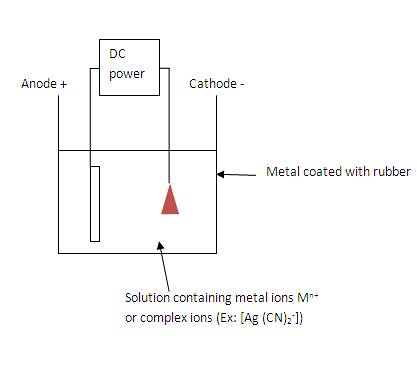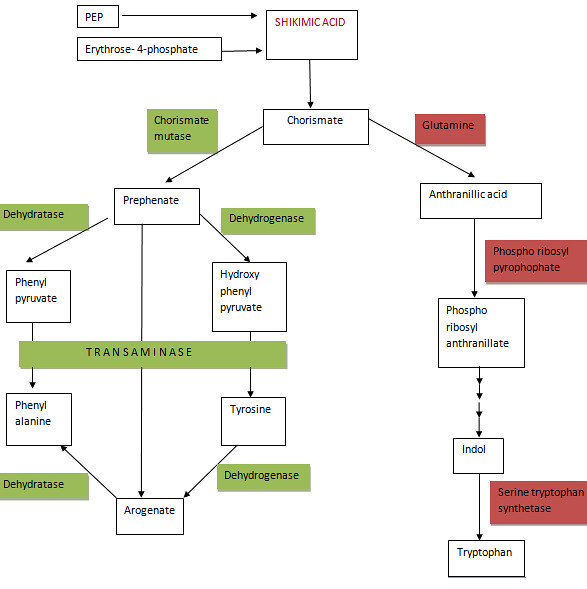Theory
The solubility of
poorly soluble salts is expressed as the solubility product. That is the
product of the concentration of ions in the solution which are in equilibrium with
the solid ion. These concentrations can be determined via conductivity measurements.
In this practical PbSO4 is used.
PbSO4 ⇌ Pb2+ + SO42-
Assume concentration
of solid is a constant.
Concentration of Pb2+=
concentration of SO42- = C
\ Ksp = [Pb2+aq]
[SO42-aq]
Ksp = C2
The measurement of the specific conductivity, K of the saturated
solution leads to a value of the concentration.
i.e. C = K/ Λ0
As, Ksp
= C2
Ksp = (K/ Λ0)2
Λ0 for PbSO4
= 3.02 × 10-2 m2Smol-
Λ0 = Molar conductivity at infinite dilution
Procedure
About 2g of finely powdered PbSO4 was measured using the
electric balance into a clean, dry watch glass.
It was added to a clean beaker. The watch glass was washed with
distilled water and that washed water was also added to the beaker.
To remove impurities it was shaken by adding distilled water. It was
kept aside for a while, for the salt to be collected at the bottom of the
beaker. Then the upper layer was decanted and repeated this step for several
times.
An empty reagent bottle was kept in a water bath at 240C in
order to maintain the temperature of the reagent bottle at 250C.
Then the well- washed salt was added to the reagent bottle and added
100mL of distilled water.
After awhile without disturbing the solid, the clear upper solution was
decanted into a clean beaker and the conductivity was measured.
Results
K of distilled water at 250C = 4.2 µS/cm
K of PbSO4 at 250C = 39.2 µS/cm
Calculations
Corrected conductivity of PbSO4 = (39.2 – 4.2) µS/cm
= 35.0 µS/cm
=
35.0 × 10-2 Sm-
C = K/ Λ0
C = 35.0 × 10-2 Sm-
/ 3.02 × 10-2 m2Smol-
C = 0.11589 molm-3
C = 0.11589 × 10-3 moldm-3
PbSO4 ⇌ Pb2+ + SO42-
Ksp = [Pb2+aq] [SO42-aq]
Ksp = C2
Ksp = (0.11589 × 10-3 moldm-3)2
= 1.3430 ×
10-8 mol2 dm-6
Conclusion
Exact given Ksp at 250C is 1.6
× 10-8 mol2 dm-6. Practically obtained Ksp at 250C
is 1.3430× 10-8 mol2 dm-6
As the both values are closer we can
use conductivity measurements in order to calculated KSP.
Discussion
The precipitate was washed in order to
remove impurities that may affect the results. It should be washed several
times to obtain a well- washed precipitate. During this process, precipitate can
be also removed. Therefore all 2g of the sample wouldn’t be left.
When maintaining the temperature of 250C, the water bath was kept at
a temperature about 240C. this is because we measure the temperature
of the water bath assuming the temperature inside the reagent bottle is at 250C.
But actually the temperature of the solution inside would be slightly higher
than the temperature of the water bath as the glass of the reagent bottle separates
both. Therefore the temperature of the water bath was kept at lower temperature
to obtain the required temperature for the solution.
Reagent bottle should be shaken time to
time when it was kept in the water bath. This is to increase the dissociation
and reach the equilibrium. If not, we might have not measured the conductivity
at the equilibrium and that will alter the true Ksp value.
The calculated Ksp value is slightly
smaller than the exact given Ksp value due to errors occurred during the
experiment. Mainly the personal errors. Such as temperature maintaining errors,
measuring errors and personal carelessness.
When preparing the solutions, the
distilled water was added. Distilled water also contains ions it self. Therefore
additional conductivity from the distilled water would be raised in the
solution. For this reason the conductivity of the solution is corrected by deducting
the conductivity of water.

